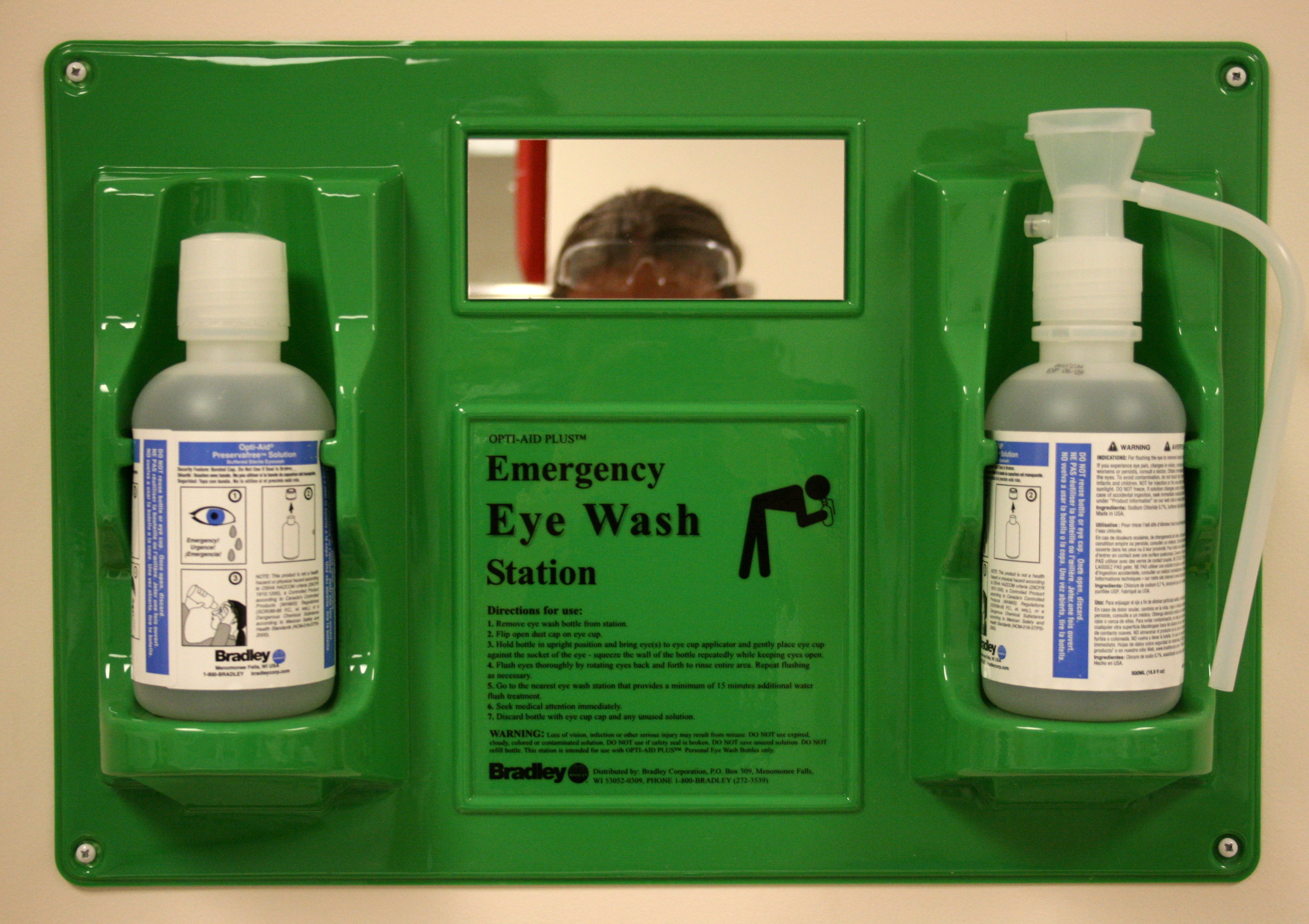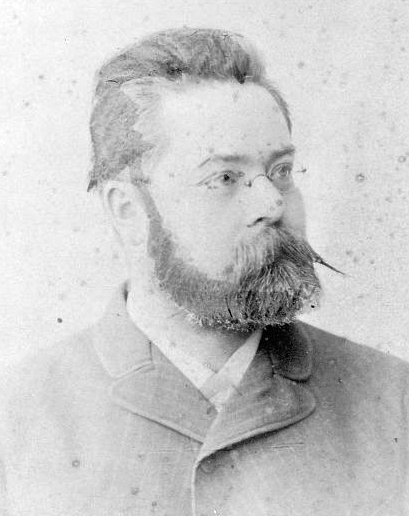|
Otto Carl Friedrich Westphal
Otto Carl Friedrich Westphal (1800 – 1879) was a German physician and Geheimer Sanitätsrath (privy medical counsellor). He wrote on the human eye and on optics. He was interested in environmental impacts on eyesight, including light quality, and argued that eyeglasses should be tailored to occupation. Westphal also examined a variety of eyewashes and tinctures, and reportedly invented eye occlusion therapy, currently used for correction of strabismus and amblyopia. Westphal was married to Caroline Friederike Heine (1811– 1888), the daughter of a wealthy banker. He was the father of Karl Friedrich Otto Westphal and grandfather of Alexander Carl Otto Westphal Alexander Carl Otto Westphal (18 May 1863, Berlin – 9 January 1941, Bonn) was a German neurologist and psychiatrist. He was the son of the psychiatrist Karl Friedrich Otto Westphal (1833–1890) and Clara Mendelssohn and the grandson of Ott .... References 1800 births 1879 deaths German ophthalmologists [...More Info...] [...Related Items...] OR: [Wikipedia] [Google] [Baidu] |
Optics
Optics is the branch of physics that studies the behaviour and properties of light, including its interactions with matter and the construction of instruments that use or detect it. Optics usually describes the behaviour of visible, ultraviolet, and infrared light. Because light is an electromagnetic wave, other forms of electromagnetic radiation such as X-rays, microwaves, and radio waves exhibit similar properties. Most optical phenomena can be accounted for by using the classical electromagnetic description of light. Complete electromagnetic descriptions of light are, however, often difficult to apply in practice. Practical optics is usually done using simplified models. The most common of these, geometric optics, treats light as a collection of rays that travel in straight lines and bend when they pass through or reflect from surfaces. Physical optics is a more comprehensive model of light, which includes wave effects such as diffraction and interference that cannot be ... [...More Info...] [...Related Items...] OR: [Wikipedia] [Google] [Baidu] |
Visual Perception
Visual perception is the ability to interpret the surrounding environment through photopic vision (daytime vision), color vision, scotopic vision (night vision), and mesopic vision (twilight vision), using light in the visible spectrum reflected by objects in the environment. This is different from visual acuity, which refers to how clearly a person sees (for example "20/20 vision"). A person can have problems with visual perceptual processing even if they have 20/20 vision. The resulting perception is also known as vision, sight, or eyesight (adjectives ''visual'', ''optical'', and ''ocular'', respectively). The various physiological components involved in vision are referred to collectively as the visual system, and are the focus of much research in linguistics, psychology, cognitive science, neuroscience, and molecular biology, collectively referred to as vision science. Visual system In humans and a number of other mammals, light enters the eye through the cornea and is ... [...More Info...] [...Related Items...] OR: [Wikipedia] [Google] [Baidu] |
Eyewash
Eyewash is a fluid, commonly salineus, used to physically wash the eyes in the case that they may be contaminated by foreign materials or substances. Eyewashes may be beneficial to those with sensitive eyes and can provide relief to the painful side effects of sensitivity. However, prolonged usage of such products will cause mild side effects, such as the reddening of the eye and/or pupil and cause itchiness. Occupational safety In the United States, the Occupational Safety and Health Administration The Occupational Safety and Health Administration'' (OSHA ) is a large regulatory agency of the United States Department of Labor that originally had federal visitorial powers to inspect and examine workplaces. Congress established the agenc ... (OSHA) was created as a result of the Occupational Safety and Health Act of 1970. The law was created to help further protect employee safety while providing "safe & healthful working conditions." OSHA's primary eyewash standard, 2 ... [...More Info...] [...Related Items...] OR: [Wikipedia] [Google] [Baidu] |
Tincture
A tincture is typically an extract of plant or animal material dissolved in ethanol (ethyl alcohol). Solvent concentrations of 25–60% are common, but may run as high as 90%.Groot Handboek Geneeskrachtige Planten by Geert Verhelst In chemistry, a tincture is a solution that has ethanol as its solvent. In herbal medicine, alcoholic tinctures are made with various ethanol concentrations, which should be at least 20% alcohol for preservation purposes. Other solvents for producing tinctures include vinegar, glycerol (also called glycerine), diethyl ether and propylene glycol, not all of which can be used for internal consumption. Ethanol has the advantage of being an excellent solvent for both acidic and basic (alkaline) constituents. A tincture using glycerine is called a glycerite. Glycerine is generally a poorer solvent than ethanol. Vinegar, being acidic, is a better solvent for obtaining alkaloids but a poorer solvent for acidic components. For individuals who choose not to i ... [...More Info...] [...Related Items...] OR: [Wikipedia] [Google] [Baidu] |
Strabismus
Strabismus is a vision disorder in which the eyes do not properly align with each other when looking at an object. The eye that is focused on an object can alternate. The condition may be present occasionally or constantly. If present during a large part of childhood, it may result in amblyopia, or lazy eyes, and loss of depth perception. If onset is during adulthood, it is more likely to result in double vision. Strabismus can occur due to muscle dysfunction, farsightedness, problems in the brain, trauma or infections. Risk factors include premature birth, cerebral palsy and a family history of the condition. Types include esotropia, where the eyes are crossed ("cross eyed"); exotropia, where the eyes diverge ("lazy eyed" or "wall eyed"); and hypertropia or hypotropia where they are vertically misaligned. They can also be classified by whether the problem is present in all directions a person looks (comitant) or varies by direction (incomitant). Diagnosis may be made by obser ... [...More Info...] [...Related Items...] OR: [Wikipedia] [Google] [Baidu] |
Amblyopia
Amblyopia, also called lazy eye, is a disorder of sight in which the brain fails to fully process input from one eye and over time favors the other eye. It results in decreased vision in an eye that typically appears normal in other aspects. Amblyopia is the most common cause of decreased vision in a single eye among children and younger adults. The cause of amblyopia can be any condition that interferes with focusing during early childhood. This can occur from poor alignment of the eyes (strabismic), an eye being irregularly shaped such that focusing is difficult, one eye being more nearsighted or farsighted than the other (refractive), or clouding of the lens of an eye (deprivational). After the underlying cause is addressed, vision is not restored right away, as the mechanism also involves the brain. Amblyopia can be difficult to detect, so vision testing is recommended for all children around the ages of four to five. Early detection improves treatment success. Glasse ... [...More Info...] [...Related Items...] OR: [Wikipedia] [Google] [Baidu] |
Karl Friedrich Otto Westphal
Karl Friedrich Otto Westphal (23 March 1833, in Berlin – 27 January 1890, in Kreuzlingen) was a German psychiatrist from Berlin. He was the son of Otto Carl Friedrich Westphal (1800–1879) and Karoline Friederike Heine and the father of Alexander Karl Otto Westphal (1863-1941). He was married to Klara, daughter of the banker Alexander Mendelssohn. Academic career After receiving his doctorate, he worked at the Berlin Charité, and subsequently became an assistant in the department for the mentally ill under Wilhelm Griesinger (1817–1868) and Karl Wilhelm Ideler (1795–1860). In 1869 he became an associate professor of psychiatry, as well as a clinical instructor in the department for mental and nervous diseases, In 1874 he attained the title of full professor of psychiatry. Achievements in medicine Westphal's contributions to medical science are many; in 1871 he coined the term "agoraphobia", when he observed that three male patients of his displayed extreme anxiety an ... [...More Info...] [...Related Items...] OR: [Wikipedia] [Google] [Baidu] |
Alexander Carl Otto Westphal
Alexander Carl Otto Westphal (18 May 1863, Berlin – 9 January 1941, Bonn) was a German neurologist and psychiatrist. He was the son of the psychiatrist Karl Friedrich Otto Westphal (1833–1890) and Clara Mendelssohn and the grandson of Otto Carl Friedrich Westphal. Alexander Westphal studied at Heidelberg and Berlin, receiving his doctorate at Berlin in 1888. He then became an assistant to Wilhelm Heinrich Erb (1840-1921) in Heidelberg and to Heinrich Curschmann (1846–1910) in Leipzig. In 1892 he became the head physician of the department for nervous diseases at the Berlin Charité under Friedrich Jolly (1844–1904), subsequently qualifying in the fields psychiatry and neurology (1894). In 1902 he accepted an invitation to the University of Greifswald as an associate professor, and two years later relocated to the University of Bonn as full professor. Westphal made contributions towards the literature involving diabetes insipidus, leukaemia and pseudoleukaemia, as w ... [...More Info...] [...Related Items...] OR: [Wikipedia] [Google] [Baidu] |
1800 Births
Eighteen or 18 may refer to: * 18 (number), the natural number following 17 and preceding 19 * one of the years 18 BC, AD 18, 1918, 2018 Film, television and entertainment * 18 (film), ''18'' (film), a 1993 Taiwanese experimental film based on the short story ''God's Dice'' * Eighteen (film), ''Eighteen'' (film), a 2005 Canadian dramatic feature film * 18 (British Board of Film Classification), a film rating in the United Kingdom, also used in Ireland by the Irish Film Classification Office * 18 (Dragon Ball), 18 (''Dragon Ball''), a character in the ''Dragon Ball'' franchise * "Eighteen", a 2006 episode of the animated television series ''12 oz. Mouse'' Music Albums * 18 (Moby album), ''18'' (Moby album), 2002 * 18 (Nana Kitade album), ''18'' (Nana Kitade album), 2005 * ''18...'', 2009 debut album by G.E.M. Songs * 18 (5 Seconds of Summer song), "18" (5 Seconds of Summer song), from their 2014 eponymous debut album * 18 (One Direction song), "18" (One Direction song), from the ... [...More Info...] [...Related Items...] OR: [Wikipedia] [Google] [Baidu] |
1879 Deaths
Events January–March * January 1 – The Specie Resumption Act takes effect. The United States Note is valued the same as gold, for the first time since the American Civil War. * January 11 – The Anglo-Zulu War begins. * January 22 – Anglo-Zulu War – Battle of Isandlwana: A force of 1,200 British soldiers is wiped out by over 20,000 Zulu warriors. * January 23 – Anglo-Zulu War – Battle of Rorke's Drift: Following the previous day's defeat, a smaller British force of 140 successfully repels an attack by 4,000 Zulus. * February 3 – Mosley Street in Newcastle upon Tyne (England) becomes the world's first public highway to be lit by the electric incandescent light bulb invented by Joseph Swan. * February 8 – At a meeting of the Royal Canadian Institute, engineer and inventor Sandford Fleming first proposes the global adoption of standard time. * March 3 – United States Geological Survey is founded. * March 11 – The ... [...More Info...] [...Related Items...] OR: [Wikipedia] [Google] [Baidu] |





